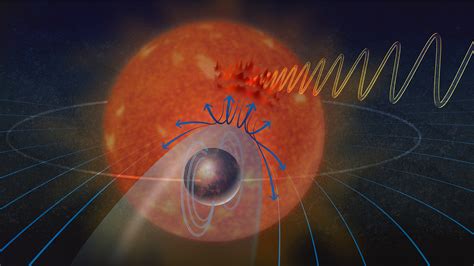Earth similarity index

The Earth Similarity Index (ESI) is a proposed characterization of how similar a planetary-mass object or natural satellite is to Earth. It was designed to be a scale from zero to one, with Earth having a value of one; this is meant to simplify planet comparisons from large databases. The scale has no quantitative … See more The ESI, as proposed in 2011 by Schulze-Makuch et al. in the journal Astrobiology, incorporates a planet's radius, density, escape velocity, and surface temperature into the index. Thus the authors describe the index as having … See more The classification of exoplanets is difficult in that many methods of exoplanet detection leave several features unknown. For example, with the transit method, measurement of … See more • List of natural satellites See more Although the ESI does not characterize habitability, given the point of reference is the Earth, some of its functions match those used by habitability measures. As with the definition of the habitable zone, the ESI uses surface temperature as a primary function … See more The index can be calculated for objects other than planets, including natural satellites, dwarf planets and asteroids. The lower average … See more • HEC: Data of Potential Habitable Exoplanets and Exomoons See more Web지구 유사도 지수(영어: Earth Similarity Index, ESI)는 행성이 지구와 얼마나 닮았는가를 나타내는 수치로, 0부터 1까지로 정의되며 1에 가까울수록 지구와 유사함을 나타낸다. 지구 유사도 지수는 커다란 자료 속에서 행성들을 쉽게 분류하기 위해 고안되었으며, 수치가 높다고 행성 거주가능성이 무조건 ...
Earth similarity index
Did you know?
WebTRAPPIST-1e, also known as 2MASS J23062928-0502285 e, is an almost Earth-sized terrestrial extrasolar planet orbiting around the ultra-cold dwarf star TRAPPIST-1, located approximately 39 light-years (12 parsecs) … WebJan 22, 2024 · Earth Similarity Index (ESI) is defined as geometrical mean of radius, density, surface temperature and escape velocity of planets, that ranges from 1 (Earth) to 0 (dissimilar to Earth).
WebAstronomy Ch. 24. Term. 1 / 70. 1. In 1952, chemists Harold Urey and Stanley Miller mixed ammonia, methane, and hydrogen in a closed container, zapped it with electrical sparks, and found that. a. they could induce cold fusion to occur, b. they could not induce any amino acids to form. c. single-celled microorganisms had been spontaneously created. WebApr 7, 2024 · The Earth Similarity Index (ESI) is a scale to physically compare other planets to Earth. The scale is between 0 (no similarity to Earth) and 1 (Earth-like). Planets with an ESI between 0.8 and 1.0 are …
WebThe ESI (Earth Similarity Indice) calculated by Abel Mendez (PHL) for each exoplanet is added. For comparison with our solar system planets, Earth's ESI is 1, Venus's ESI is 0.44, and Mars's ESI is 0.64. Caution: the ESI is … WebJul 8, 2024 · The Earth Similarity Index (ESI) is a proposed characterization of how similar a planetary-mass object or natural satellite is to Earth. It was designed to be a scale …
WebJan 26, 2024 · This is a simple and useful code to calculate and plot the Earth Similarity Index (ESI) as defined by Schulze-Makuch et al. (2011). The function requires only the radius, mass, and surface ...
WebThis is a list of exoplanets within the circumstellar habitable zone that are under 10 Earth masses and smaller than 2.5 Earth radii, and thus have a chance of being rocky. Note that inclusion on this list does not guarantee habitability, and in particular the larger planets are unlikely to have a rocky composition. Earth is included for comparison. north devon council business ratesWebThe Earth Similarity Index (ESI) attempts to quantify the physical similarity between an astronomical body (usually a planet or moon) and Earth. It is defined by. where the … how to respond to youWebJan 22, 2024 · The Earth Similarity Index (ESI) is defined to find the similarity with Earth, which ranges from 1 (Earth) to 0 (totally dissimilar to Earth). ESI can be computed using … how to respond when someone says okWebMar 1, 2024 · I would also encourage you to check out more modern image similarity techniques, like using pretrained neural networks (e.g. Inception) or training your own Autoencoder to measure image similarity. These latter techniques can capture much more flexible notions of image similarity than the older methods shown above! north devon council addressWebFeb 26, 2024 · Proposed in 2011, this index gives alien worlds a number from 0 (no similarity) to 1 (very similar to Earth) based on a few characteristics. These include the … how to respond to woke alumni giving requestsWebAug 25, 2024 · Earth Similarity Index (ESI) Means* The Earth Similarity Index (ESI) is a scale to physically compare other planets to our Earth. The scale is between 0 (no similarity to Earth) and 1 (Earth-like). Planets with an ESI between 0.8 and 1.0 are more likely to be similar to Earth. 👇👇👇. Read Original Article north devon councillor grantsWebApr 10, 2024 · The Earth Similarity Index (ESI) has proven to be an essential tool in locating Earth-like planets throughout the universe, yet its limited scope restricts its full potential. ExoPSI is a ... how to respond when invited for an interview